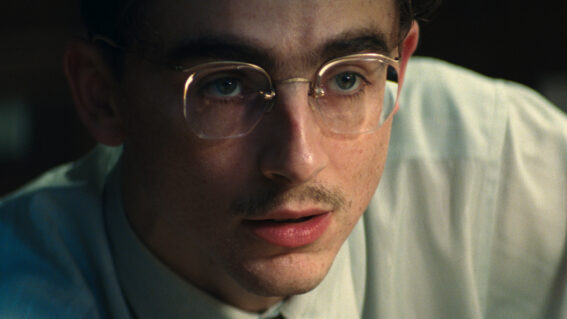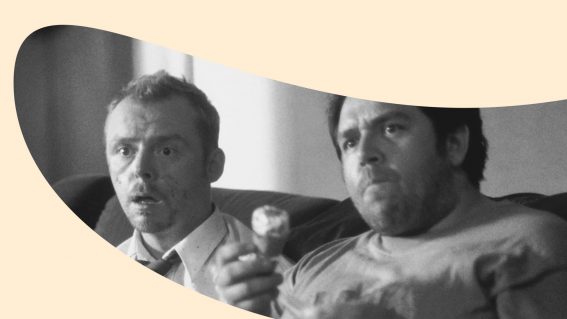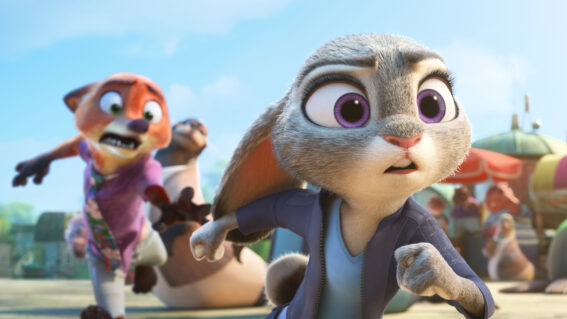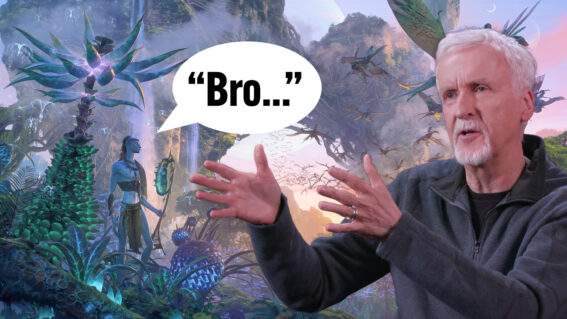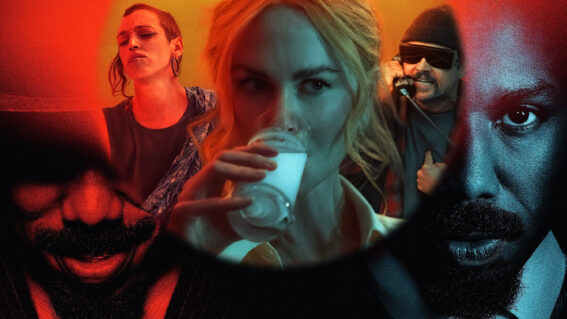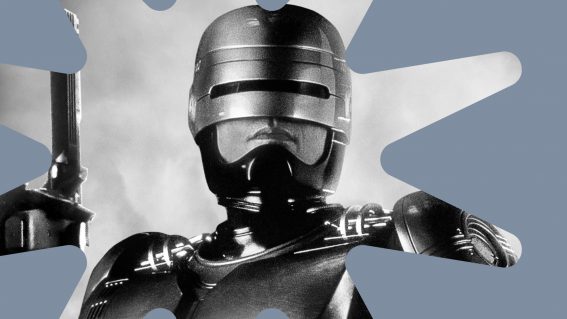A brief history on cinematic dog deaths
I love dogs. I’ve had three of them in the quarter century I’ve been alive. I love their dopiness, their energy, their playful nature and their loyalty. I especially love how dogs remain consistently not-dead for long periods of time. And yet, in the world of cinema, dogs are killed off more frequently than everyone […]
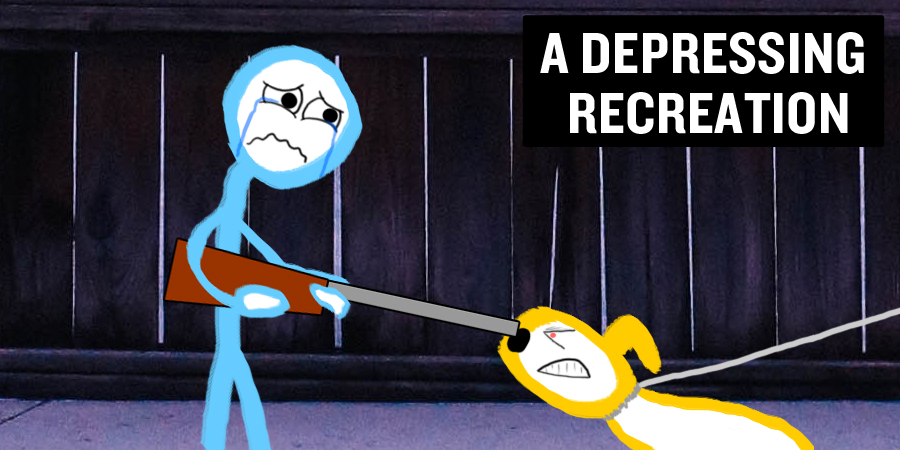
I love dogs. I’ve had three of them in the quarter century I’ve been alive. I love their dopiness, their energy, their playful nature and their loyalty. I especially love how dogs remain consistently not-dead for long periods of time. And yet, in the world of cinema, dogs are killed off more frequently than everyone you ever loved in Game of Thrones.
As a kid, the reality of death wasn’t something I had to confront directly. I never lost a parent, a sibling, a close friend, and certainly not my dog. It was a very fortunate quality in my childhood, a quality squandered by the 1993 torture-porn flick Homeward Bound.
Deceptively labelled as a comedic family adventure, this Walt Disney horror film follows two domesticated dogs and a house cat who get separated from their owners. They get up to all manner of hilarious hijinks – a clever ruse used to soften you up to make its gut-punch finale even more painful. Let me gif it for you:
Just when the pack reaches the final mile, old boy Shadow falls down a pit of muddy misery…
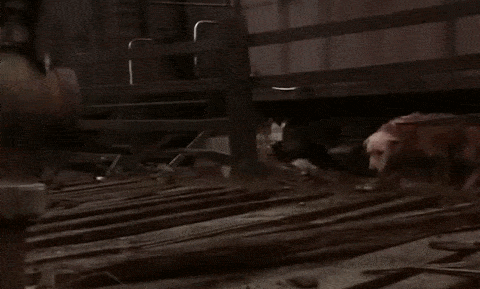
…followed by an retina-scorching image of eternal sadness.
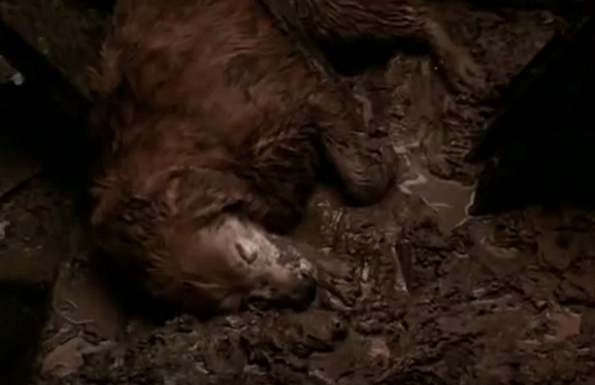
Shadow attempts to climb back up, but slides pathetically back down to the bottom…

…and simply lies down and accepts his fate. When young buck Chance tells him not to give up, Shadow replies with some cold shit…
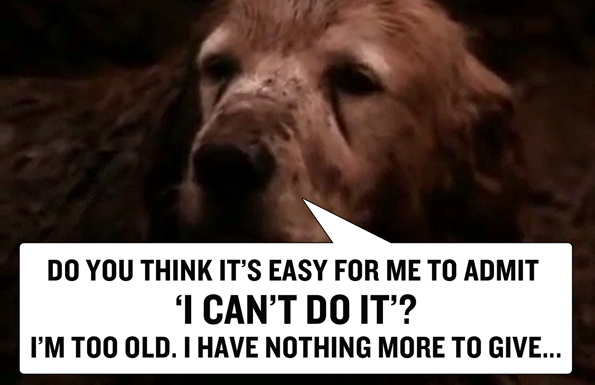
(Watch the whole clip here if you’re not already emotionally destroyed.)
It was the first experience I can recall that confronted me with canine mortality and, as a kid who had not experienced an animal death first-hand, I did not take this well. Dogs weren’t meant to get hurt. Dogs weren’t meant to grow depressed. Dogs weren’t meant to spout philosophical platitudes about ageing. Most of all, dogs weren’t meant to die.
Fortunately, Shadow didn’t die in the end – albeit in the most bullshit, plot hole-digging, emotionally manipulative way that STILL breaks me down to this very day.
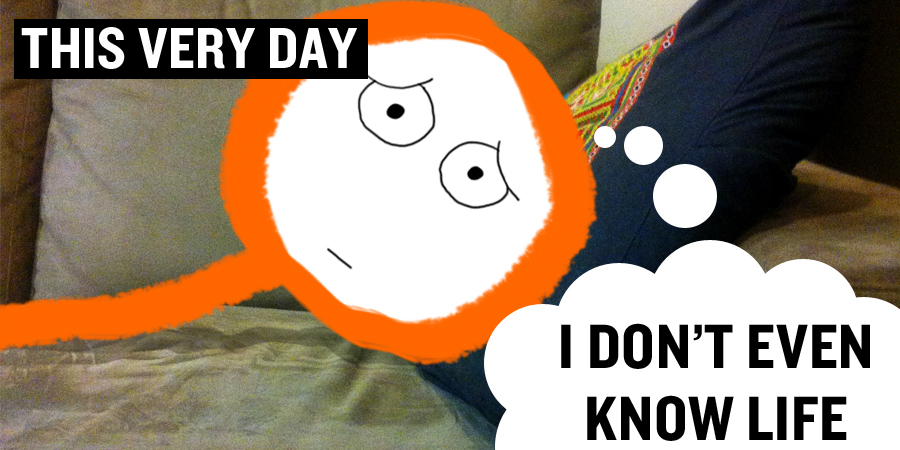
My parents spared me from watching Walt PTSD-isney’s other “family” classic Old Yeller, which is the arguable origin point of classic cinematic dog deaths. To sum up the scene in one long-winded sentence: a young boy adopts a stray dog and grows to love it only for it to get uncontrollably crazy with rabies, forcing the boy to SHOOT HIS BELOVED FRIEND WITH A F&%KING SHOTGUN THROUGH A RIVER OF HIS OWN GOD-DAMN TEARS!
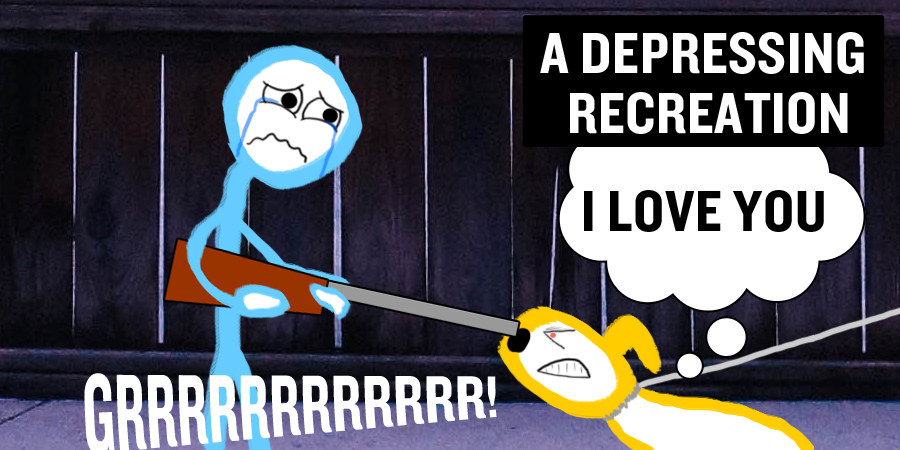
And no, I’m not giving you a spoiler alert because Friends based an entire episode on that film’s ending.
Given their intrinsically innocent nature, the death of a dog can shred us into compassion confetti more so than most on-screen human death. It took a while for cinema to capitalise on this, but when it did, the rise of dog deaths became exponential.
Turner & Hooch gave the taking-a-bullet-for-your-partner trope a canine twist. Hooch descended from the heavens like a four-legged Jesus and sacrificed himself for Turner WHILE tackling the gun-tooter. Hooch’s death would have been sadder if he didn’t go out like a total badass.
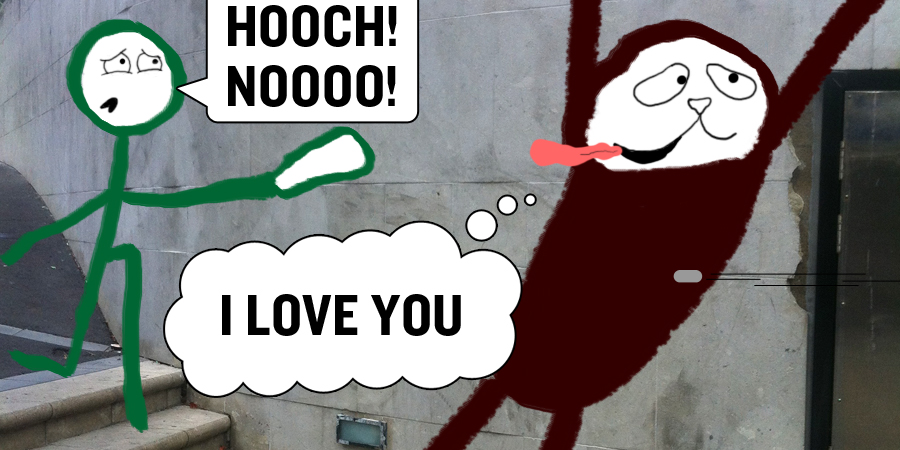
I Am Legend killed off its main pooch 1.8 decades later in what was easily the film’s highlight scene. That dog’s name was Sam, Robert’s (Will Smith) trusty companion and only friend. When Sam got bit by zombie dogs (not kidding), she became infected, forcing Robert to slowly choke her to death while singing Bob Marley’s Three Little Birds. I would have cried if I was physically capable of crying.
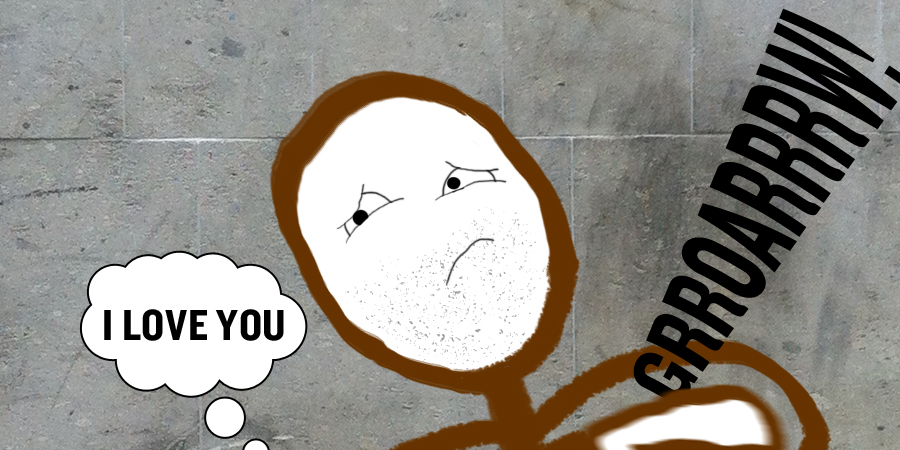
Owen Wilson and Jennifer Aniston followed the trend with Marley & Me. I never saw it, but given the reaction to the film, it wasn’t difficult to figure out that the dog died in the end (see: The Skeleton Twins trailer). Describing such a film as “a real tear-jerker” or – more overtly – saying “pet lovers WILL weep” draws a target over Marley’s adorable little head. I imagined the scene would have looked like this:
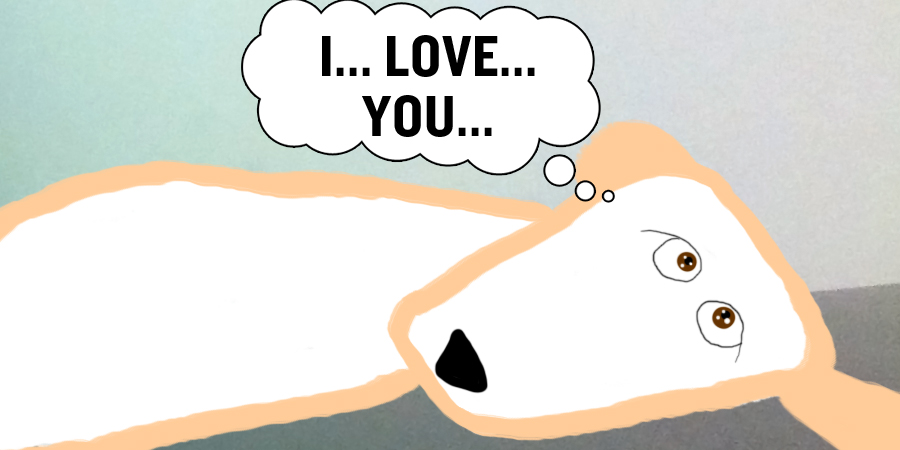
To the credit of Turner & Hooch, I Am Legend and Marley & Me, their dogs are treated as actual characters. They may not show much depth as individuals, but the way they affect the humans around them is respectably explored. When these dogs get their (agonisingly slow) death scene, those films earn our sympathy.
But recently – and I’m entering recent spoiler territory here – a number of films have relegated their dog characters to nothing more than dead meat used as bait for cheap shocks (precisely timed at the end of Act 2).
Last year’s Riddick gave Vin Diesel a badass alien dog thing that grew from pup to pooch seemingly in a week (I’m guessing seven alien dog years = one regular dog week). Riddick Diesel accepts this new companionship, making this creature the only friend he has in the universe. So how do you make a crazed bounty-hunted even crazier? You shoot his dog – his only friend in the universe.
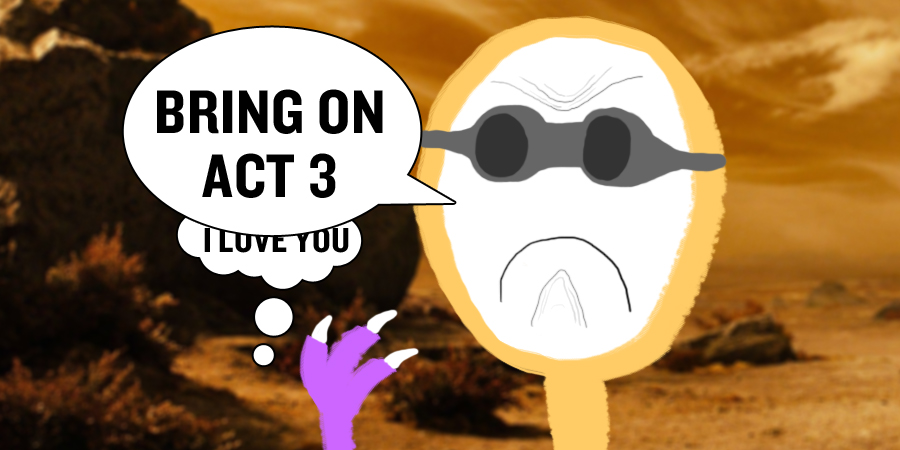
Tracks is a gorgeous-looking film starring Mia Whatsacouscous as real-life Australian Robyn Davidson, who took her dog Diggity (and some camels) on a casual 2,700km hike through The Outback. With blistering heat, deadly snakes, and an overly clingy Adam Driver basking for her attention, the movie gives her constant reminders as to why this isn’t an easy thing to do. Diggity getting abruptly poisoned was simply another one.

This shallow canine treatment has even spilled over to foreign languages. I adore Danish paranoia thriller The Hunt, but even I called bullshit at the in-your-face way they used a dog death to amplify the small town’s anger toward the man they falsely believe is a paedophile (played by Mads Mikkelsen, who is definitely not a paedophile but might be a cannibal).
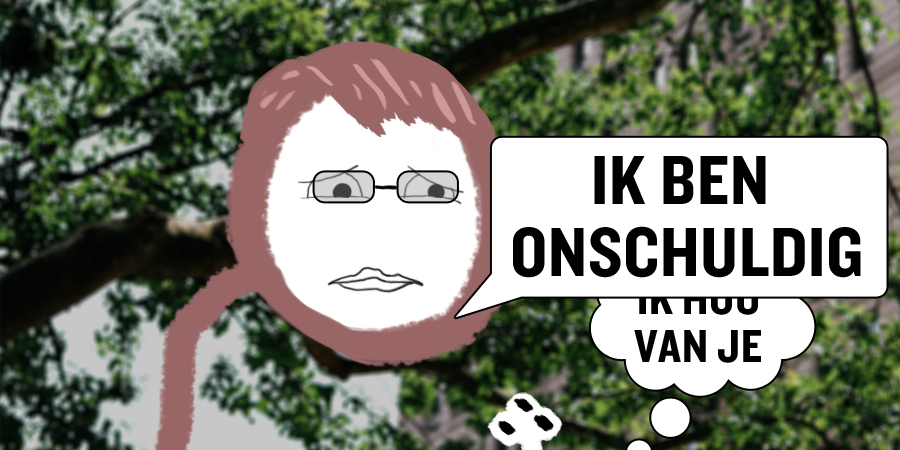
The manipulative killing off dogs has hit the point of parody, and God bless Calvary for using it to comedic effect. I won’t describe the situation; it’s best you see it for yourself.
Now that dog deaths have reached the point of cliché, I’m downright terrified to watch upcoming Tom Hardy crime thriller The Drop. Fortunately I don’t have a thing for dudes; otherwise this image of Tom Hardy holding that puppy would probably make my genitals explode.
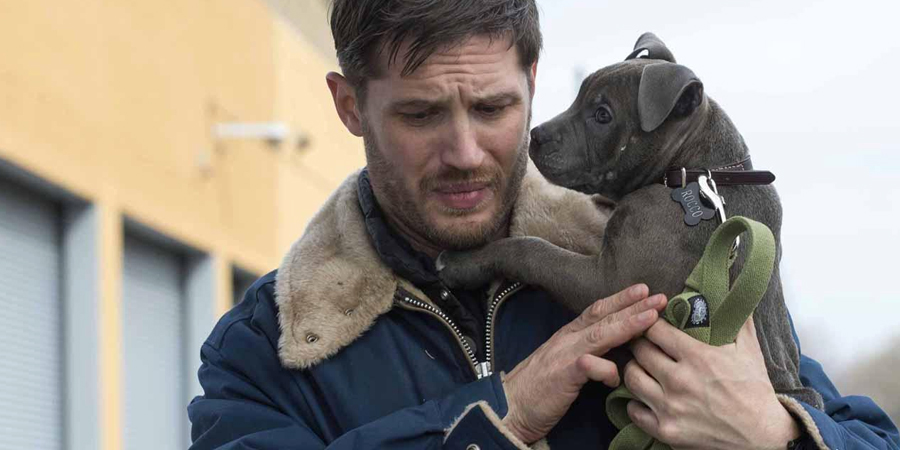
Look at that puppy again.
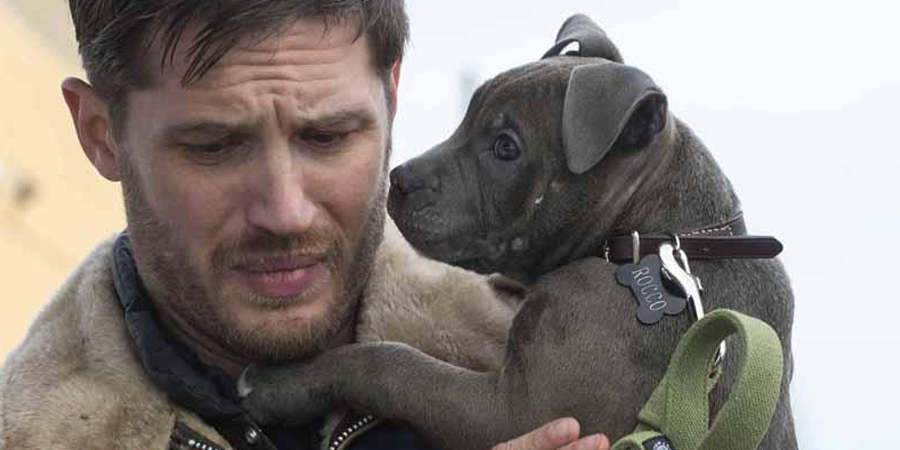
LOOK AT IT!
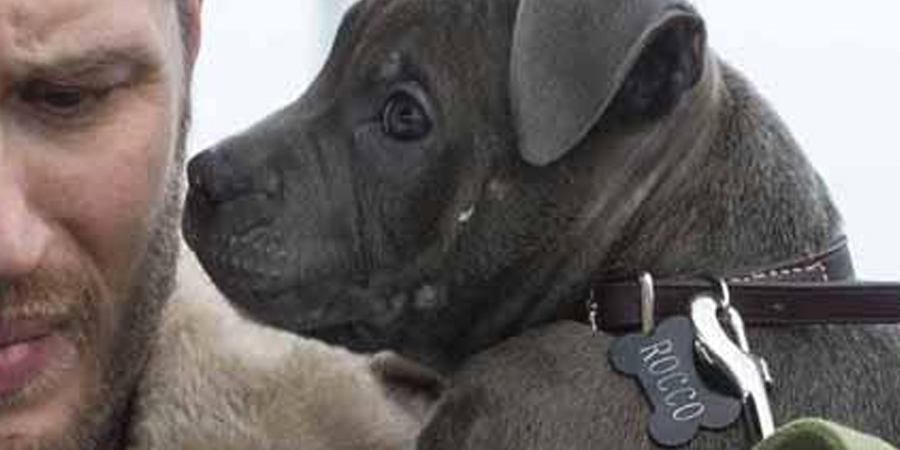
That cute canine elicits so many awes, even more-so than all the other doggies before it. It’s an easy go-to state of vulnerable adoration that will make its potential death all the more heart-wrenching. But at the same time, if the dog dies shallowly at the end of Act 2, my recognition of this tired trope will vanquish that sorrow-filled emotional response and replace it with pure hatred for cinematic animal exploitation.
I hate to approach a Tom Hardy film with such cynicism, but I feel conditioned to that response due to everything that’s come before. Perhaps I see The Drop as the next entry in this ‘cinematic dog death’ saga, hoping it’ll take the trend in a different direction.
If not, there’s always John Wick, which is the dog death revenge film I’ve been waiting three lifetimes to see.







